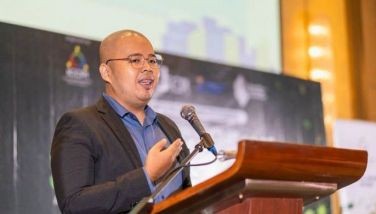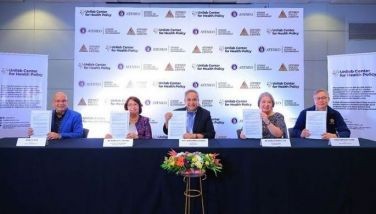Children preserving original steps
CEBU, Philippines - Even with the death of Estelita “Nang Titang†Diola, the performer of the original Sinug dance, the original steps of the Sinug is kept well among the young.
Yesterday, at least 40 performers danced the original steps at the grounds of the Casa Gorordo meseum. They were trained by Nan Titang’s niece Carolina and her nephew Rommel Borja, the drummer of the accompanying band.
“Sa wala pa siya namatay, niana gyud siya nako nga dili gyud ipaundang ang Sinug. Niana siya nako nga mag-train gyud mi (When she was still alive, she told me never to stop dancing the Sinug. She said that we should continue to teach the dance,†Carolina said.
She said it was not easy passing the skill on to the young. The youngest dancer yesterday is just five years old, about the same age when Razel Conato, 50, started dancing the Sinug.
Conato told The Freeman that she started dancing since she was six years old.
“Napasa gyud ni nako hangtod sa akong mga anak ug sa akong mga apo. Daku kaayo ikatabang. Adunay grasya nga madawat (I’ve passed the dance on to my children and grandchildren. This helped us a lot. We received blessings),†Conato said.
Nang Titang herself began dancing since she was still seven years old and learned the dance from her father, Buenaventura “Toring†Diola.
Dr. Jocelyn Gerra, Executive Director of the Culture and Heritage unit of the Ramon Aboitiz Foundation Inc., said that because of the evolution of culture, people tend to have forgotten the original steps of the dance.
“If no one teaches, it’s (culture) going to die. It takes a village to take care a child. It takes a village to take care a tradition,†Gerra said.
The original Sinug dance has two basic steps – the natural and the kinampilan. The natural step involves the “two steps forward and one step backward†routine while the other one involves the “one step right forward and one step backward†routine while the foot stays in place.
The main characters of the dance are the Christians, the Muslims and the Holy Child.
Gerra hopes that through the exhibits and documentaries published displayed at the museum and published by RAFI, they will be able to educate the Cebuanos about their own culture. RAFI owns and manages the Casa Gorordo Museum.
“It’s up to the (different) sectors. We were just showing the original (Sinug dance steps),†she added.
She also pointed out that the present Sinulog dance step while carrying the image of the Sto. Niño is not accurate.
“Sayop na siya kay ato mang irespeto ang imahe. Sacred mana. Ako lang gihangyo nga ibalik ang karaan (That’s wrong because we’re supposed to respect the image. That’s sacred. We’re asking that we bring back the past),†Carolina said.
Korean Alan Jeong who watched the performance yesterday said it is nice to know that there are those who endeavor to preserve a rich past.
“It’s awesome. They protect the traditional dance movements. It’s very important to preserve the culture. My friends in Korea don’t know yet the original steps,†Jeong said.
The “Sinug sa Casa Gorordo†is an annual activity held on the Monday after the Sinulog Grand Parade. (FREEMAN)
- Latest





















